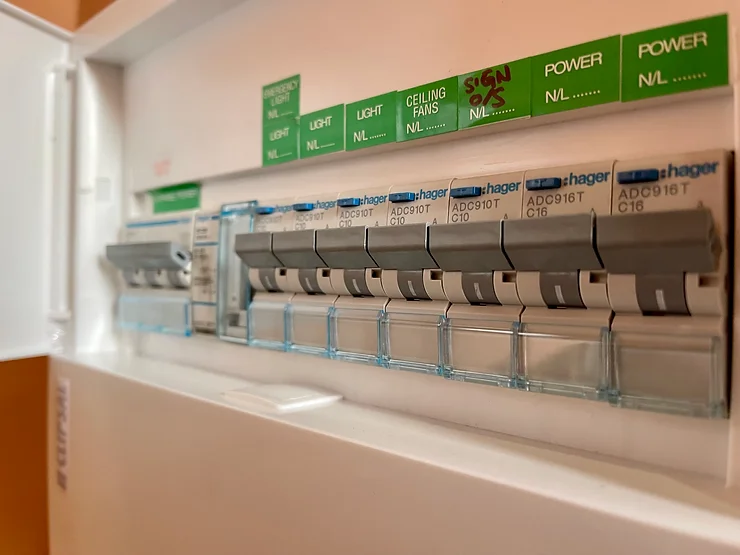The war in Ukraine and the tensions in the Middle East have highlighted the fragility of the world’s energy systems, particularly the dependence on fossil fuels. As the demand for energy continues to rise globally, there is a growing realisation that traditional energy sources like oil and gas are finite resources and will eventually run out. Moreover, these traditional energy sources are also major contributors to climate change, which is a pressing global issue.
For decades, the Middle East has been a key supplier of oil to the world, with countries like Saudi Arabia, Iran, Iraq, and Kuwait being major producers. However, the region has also been plagued by political instability, including wars, revolutions, and terrorism, which has had a significant impact on global oil prices. When there is instability in the Middle East, it often leads to disruptions in the supply of oil, which drives up prices.
These fluctuations in oil prices have had a knock-on effect on the global economy, including Australia. As a country that heavily relies on imported oil, Australia has been vulnerable to the impact of fluctuating oil prices. When oil prices rise, the cost of producing and transporting goods goes up, which can lead to inflation and a reduction in consumer spending. This can have a significant impact on the Australian economy, particularly on industries like manufacturing and transport.
To address this issue, there has been a growing interest in renewable energy technologies in Australia, particularly in the form of solar systems backed with battery installations. By investing in renewable energy technologies, Australia can reduce its reliance on imported oil and increase its energy security. This, in turn, can help to insulate the Australian economy from fluctuations in global oil prices.
Moreover, investing in renewable energy technologies like solar systems with batteries can also create entirely new economic opportunities for Australia. The solar energy sector is growing rapidly, and there is a significant demand for skilled workers to install and maintain solar systems with batteries. This can lead to the creation of new jobs and the development of new industries, which will contribute to economic growth and diversification.
There are still some challenges that need to be addressed to accelerate the adoption of renewable energy technologies in Australia. One of the main barriers to the adoption of solar systems with batteries is the high upfront costs associated with installation. This can be particularly challenging for low-income households, which may not have the financial resources to invest in renewable energy technologies. To address this, the Australian government has implemented various incentives, such as rebates and subsidies, to encourage households to invest in solar systems with batteries.
By investing in solar systems with batteries, households can significantly reduce their electricity bills and potentially even sell excess energy back to the grid, further reducing their costs. This can be especially beneficial for low-income households, who often struggle to pay their electricity bills.
While the benefits of adopting renewable energy technologies like solar systems with batteries are clear, there are still some challenges that need to be addressed. One of the main challenges is the variability of solar energy, which can be affected by factors such as weather conditions and the time of day. This means that households may need to rely on traditional energy sources during times when solar energy is not available. To address this, some households may choose to install backup generators or connect to the grid to ensure a constant supply of energy.
Furthermore, solar systems with batteries can provide a degree of energy independence to households. By generating their electricity, households are less reliant on the grid, which can be important during times of energy shortages or blackouts. This is particularly relevant in Australia, where the country experiences frequent heatwaves and bushfires, which can lead to energy shortages and blackouts.
Despite all the benefits of solar systems with batteries, the uptake of renewable energy technologies in Australia has been slow. One of the main reasons for this is the high upfront costs associated with installing solar systems with batteries. However, the long-term savings on energy bills can outweigh the initial costs of installation. The Australian government has implemented some incentives to encourage the adoption of renewable energy technologies, but these incentives are not enough to drive widespread adoption.
To accelerate the adoption of renewable energy technologies, there needs to be a concerted effort from the government, energy providers, and the public. The government can provide incentives like rebates and subsidies to encourage households to invest in renewable energy technologies. Energy providers can also play a role in promoting renewable energy by offering green energy plans and investing in renewable energy infrastructure. Finally, the public can be educated about the benefits of renewable energy technologies and how they can be used to reduce energy bills and contribute to a more sustainable future.
To begin with, the Australian government has a significant role to play in promoting the adoption of renewable energy technologies. They can introduce policies and regulations that encourage households to invest in renewable energy sources like solar systems with batteries. For instance, the government can provide rebates and subsidies for households that install solar systems with batteries, making them more affordable and accessible for low-income households. Furthermore, the government can set targets for renewable energy usage and invest in renewable energy infrastructure to create a more supportive environment for renewable energy development.
Energy providers also have a role to play in promoting renewable energy technologies like solar systems with batteries. They can offer green energy plans that allow customers to access renewable energy sources like solar, wind, and hydro. Energy providers can also invest in renewable energy infrastructure and technologies, such as battery storage and smart grid systems, to support the growth of renewable energy usage in Australia. Additionally, energy providers can partner with governments and other stakeholders to facilitate the development of renewable energy projects, such as community solar projects and renewable energy microgrids.
Lastly, the public also has an important role to play in promoting renewable energy technologies. They can be educated on the benefits of renewable energy sources like solar systems with batteries, how they work, and how to use them effectively. Public awareness campaigns and educational programs can be organized to increase awareness of the benefits of renewable energy sources and promote their adoption. Additionally, homeowners can be encouraged to share their experiences with renewable energy technologies like solar systems with batteries to inspire others to make the transition.
The adoption of renewable energy technologies like solar systems with batteries is a critical step towards a more sustainable future for Australia. To achieve this, there needs to be a concerted effort from the government, energy providers, and the public. By working together, we can accelerate the adoption of renewable energy technologies and create a more sustainable and prosperous future for all Australians.




